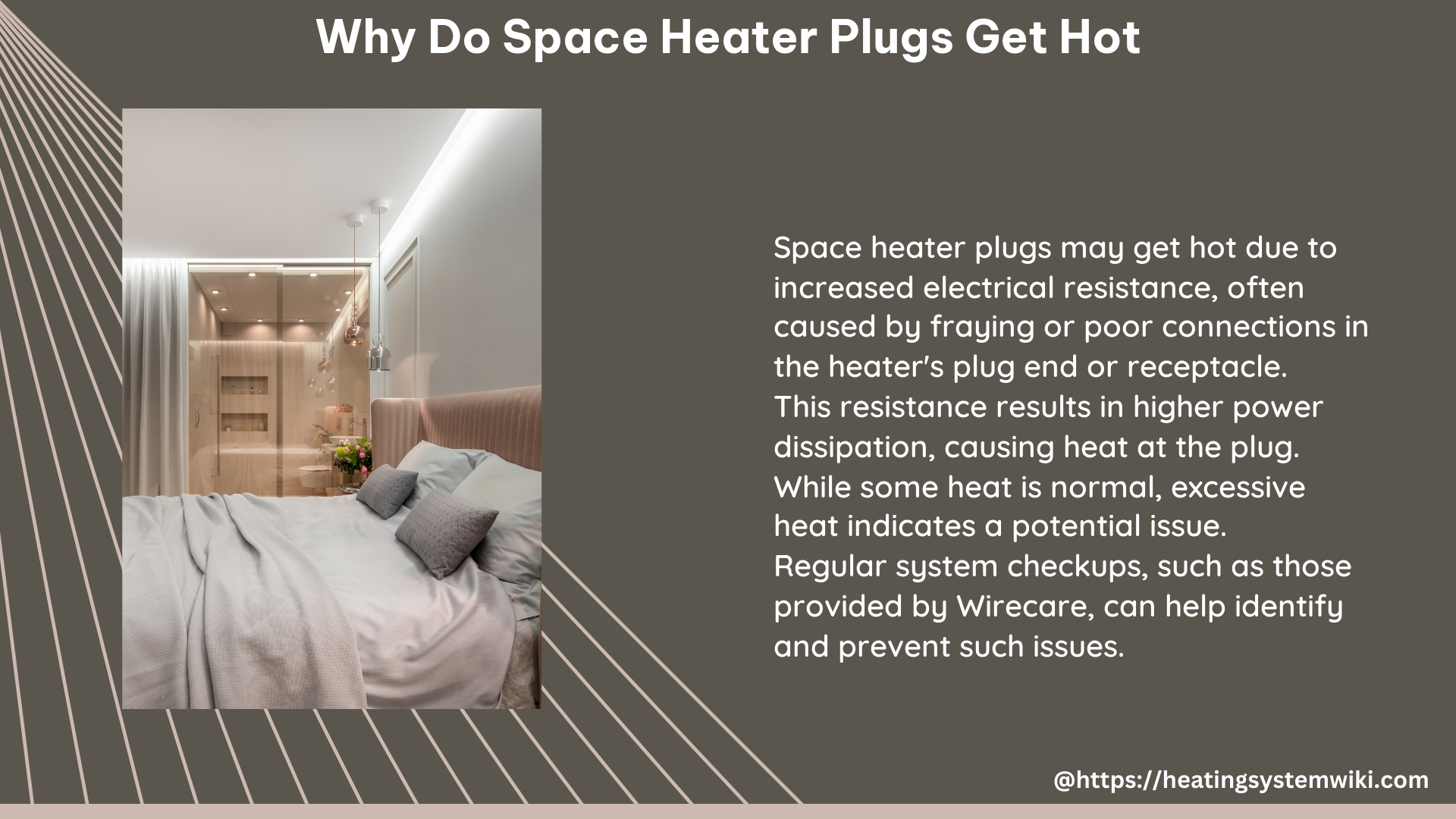Space heaters are a popular choice for supplemental heating, providing warmth and comfort in colder environments. However, one common issue that users often encounter is the plug of the space heater getting uncomfortably hot. Understanding the underlying reasons behind this phenomenon is crucial for ensuring the safe and efficient operation of these devices.
The Power Equation and Resistance
The primary reason why space heater plugs get hot is related to the electrical power equation, P = IV = V^2/R = I^2R, where P represents power, I represents current, V represents voltage, and R represents resistance. When the resistance at the plug increases, the voltage drop across it also increases, leading to higher power dissipation and, consequently, heat generation.
Resistance (R)
Electrical resistance, measured in ohms (Ω), is a critical factor in determining power dissipation and heat generation. An increase in resistance can be caused by several factors, including:
- Fraying or Poor Connections: Damage or wear and tear in the heater’s plug end, such as frayed wires or loose connections, can increase the resistance at the plug.
- Worn Receptacle Contacts: Over time, the metal contacts in the electrical receptacle can become worn, leading to increased resistance and heat buildup.
- Insulation Displacement Connections: Improper or incomplete connections, where the insulation is not fully displaced, can create high-resistance points and contribute to the plug’s heating.
Current (I) and Voltage (V)
When a space heater is plugged into an outlet, electrical current flows through the plug and the heater itself. The amount of current, measured in amperes (A), is directly related to the power consumption of the space heater. As the current flows through the plug, the resistance encountered generates heat due to the power dissipation.
Additionally, the voltage drop across the plug can increase if the resistance increases, further contributing to the heat generation.
Power (P) Dissipation
The rate at which energy is transferred by the electric current, measured in watts (W), is determined by the power equation. An increase in power dissipation, as a result of higher resistance or voltage drops, can cause the plug to get hot.
Troubleshooting Hot Space Heater Plugs

When dealing with a hot space heater plug, it is essential to follow a systematic troubleshooting approach:
- Inspect the Plug and Receptacle: Carefully examine the plug and the electrical receptacle for any signs of damage, fraying, or corrosion. Ensure that the prongs are clean and making proper contact with the receptacle.
- Test the Space Heater in a Different Outlet: Plug the space heater into a different electrical outlet to determine if the issue is specific to the original outlet or a more widespread electrical problem.
- Check the Extension Cord: If using an extension cord, ensure that it is suitable for the intended load and in good condition. Replace the cord if it shows signs of damage or wear.
- Follow Safety Guidelines: Adhere to the manufacturer’s instructions for using the space heater and ensure that you are not exceeding the recommended load on your electrical circuit, which is typically 80% of the maximum capacity.
Technical Specifications and Considerations
To further understand the factors contributing to hot space heater plugs, let’s dive into some technical specifications and considerations:
- Resistance (R): The electrical resistance of the plug and the receptacle contacts can vary depending on the materials used, the quality of the connections, and the age of the components. Typical resistance values for a well-functioning plug and receptacle can range from 0.1 Ω to 1 Ω.
- Current (I): Space heaters can draw a significant amount of current, often in the range of 10-15 amperes (A) for a 1500-watt heater. This high current flow can exacerbate the effects of increased resistance and lead to more pronounced heating at the plug.
- Voltage (V): Household electrical outlets in the United States typically provide 120 volts (V) of alternating current (AC). The voltage drop across the plug can increase if the resistance is high, leading to higher power dissipation and heat generation.
- Power (P): A 1500-watt space heater operating at 120 V would draw a current of approximately 12.5 A (P = IV = 1500 W / 120 V = 12.5 A). With a plug resistance of 0.5 Ω, the power dissipation at the plug would be P = I^2R = (12.5 A)^2 × 0.5 Ω = 78.125 W, which can cause the plug to become hot.
Conclusion
In summary, space heater plugs can get hot due to increased electrical resistance, poor connections, or issues with the space heater itself. By understanding the underlying principles of electrical power, current, and resistance, users can effectively troubleshoot and address the problem of hot space heater plugs. Following a systematic approach and adhering to safety guidelines can help ensure the safe and efficient operation of these essential heating devices.
References:
– Electrical Myths Part 1: My Space Heater’s Plug Gets Hot
– Space Heater Prongs Were Unusually Hot When I Unplugged It
– Should the Outlet That My Space Heater Uses Be Getting Warm?
